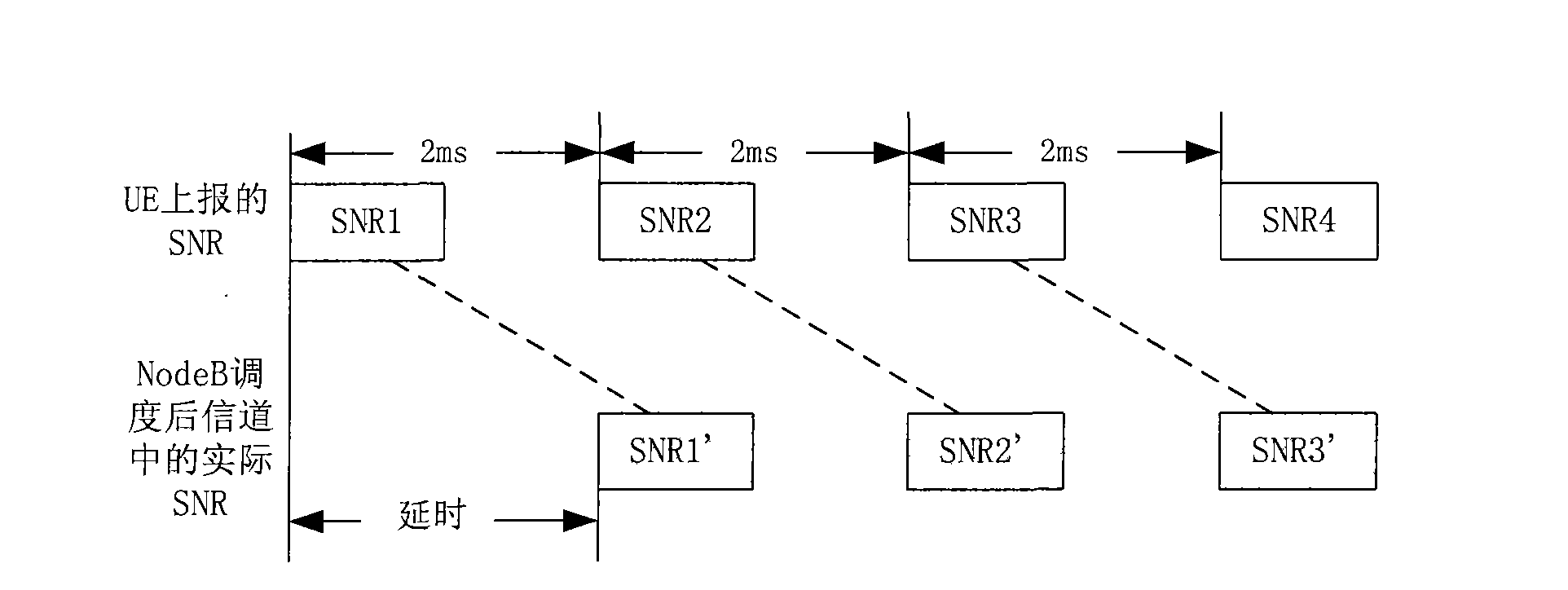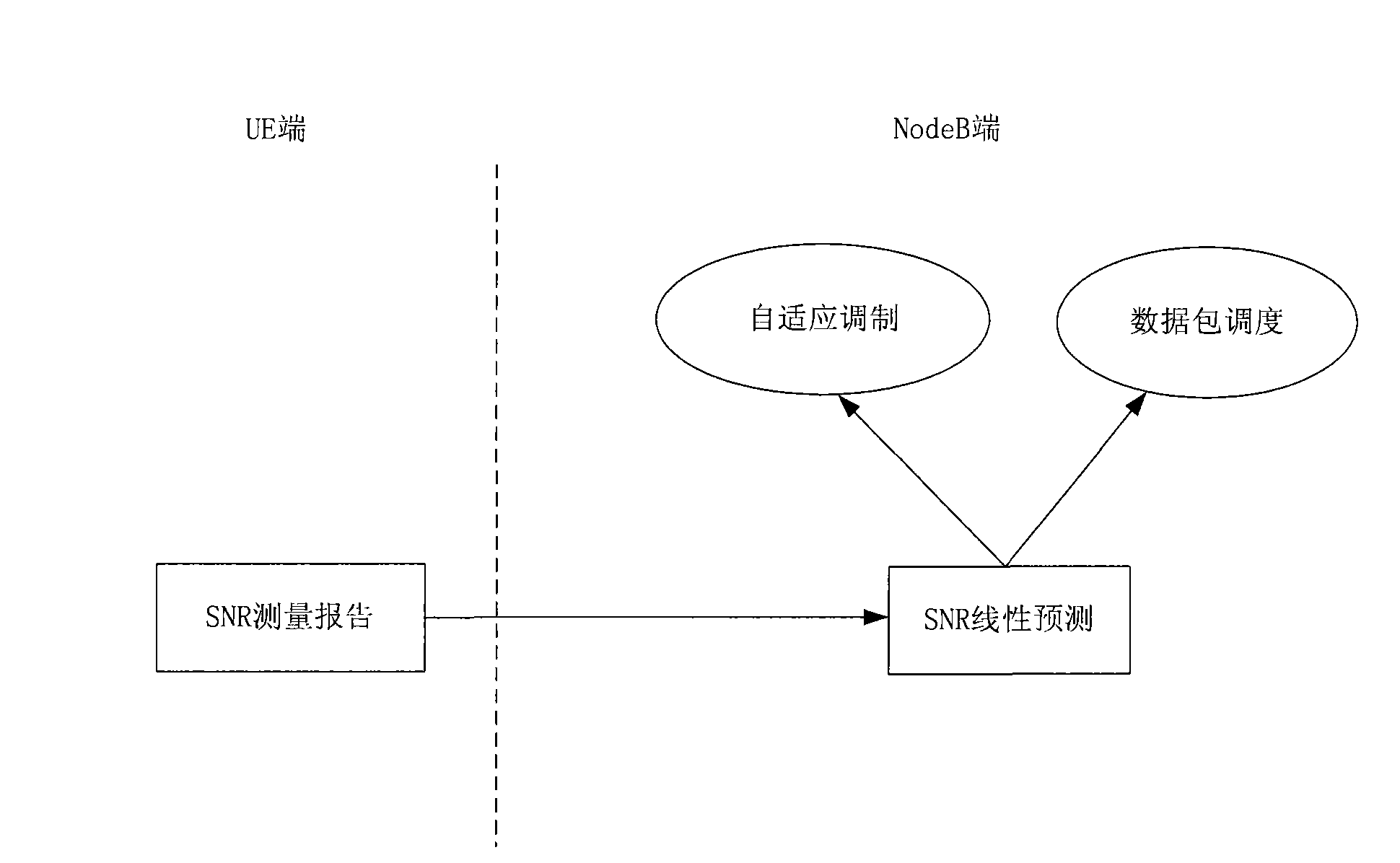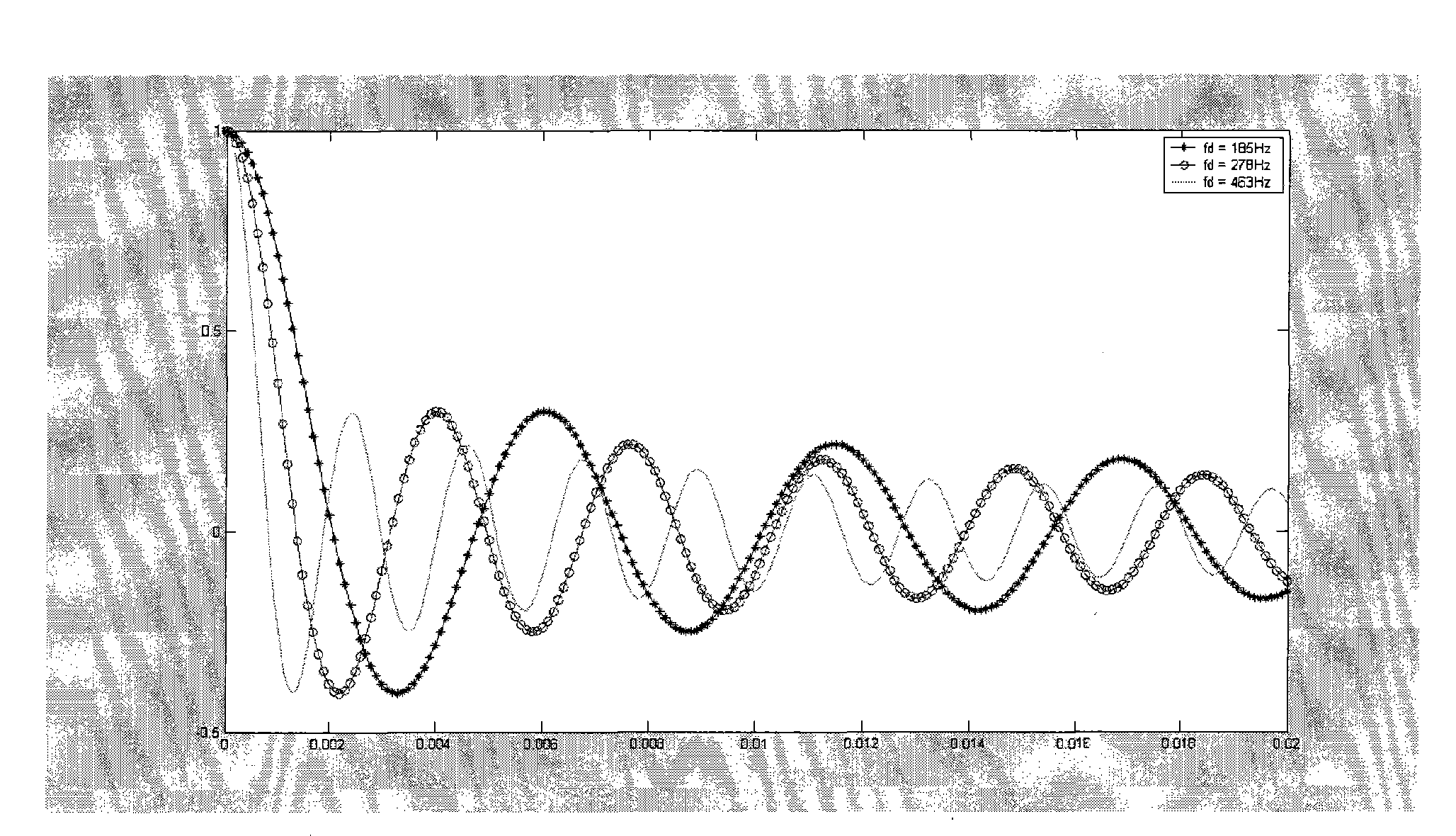Adaptive resource allocation method for high-speed mobile 3G-HSDPA communication system
A communication system and high-speed mobile technology, applied in the field of communication, can solve the problems of throughput decline, affecting HSDPA system packet scheduling and adaptive modulation and coding, and time-consuming problems
- Summary
- Abstract
- Description
- Claims
- Application Information
AI Technical Summary
Problems solved by technology
Method used
Image
Examples
Embodiment Construction
[0029] The present invention provides a high-speed mobile 3G-HSDPA communication system adaptive resource allocation method, the system includes a NodeB end and a UE end that transmit communication signals to each other, such as figure 2 shown, which includes the following steps:
[0030] a. The UE reports its signal-to-noise ratio value to the NodeB at a certain time interval T;
[0031] b. The NodeB side establishes a linear prediction model according to the signal-to-noise ratio (SNR) reported at intervals;
[0032] c. Carry out linear prediction according to the model, and obtain the signal-to-noise ratio value in the actual data transmission process after NodeB scheduling;
[0033] d. Then perform multi-user resource scheduling according to the signal-to-noise ratio value obtained by linear prediction;
[0034] e. Finally, according to the predicted SNR value, the data corresponding to the scheduled user is adaptively modulated and sent to the corresponding UE;
[003...
PUM
 Login to View More
Login to View More Abstract
Description
Claims
Application Information
 Login to View More
Login to View More - R&D
- Intellectual Property
- Life Sciences
- Materials
- Tech Scout
- Unparalleled Data Quality
- Higher Quality Content
- 60% Fewer Hallucinations
Browse by: Latest US Patents, China's latest patents, Technical Efficacy Thesaurus, Application Domain, Technology Topic, Popular Technical Reports.
© 2025 PatSnap. All rights reserved.Legal|Privacy policy|Modern Slavery Act Transparency Statement|Sitemap|About US| Contact US: help@patsnap.com



